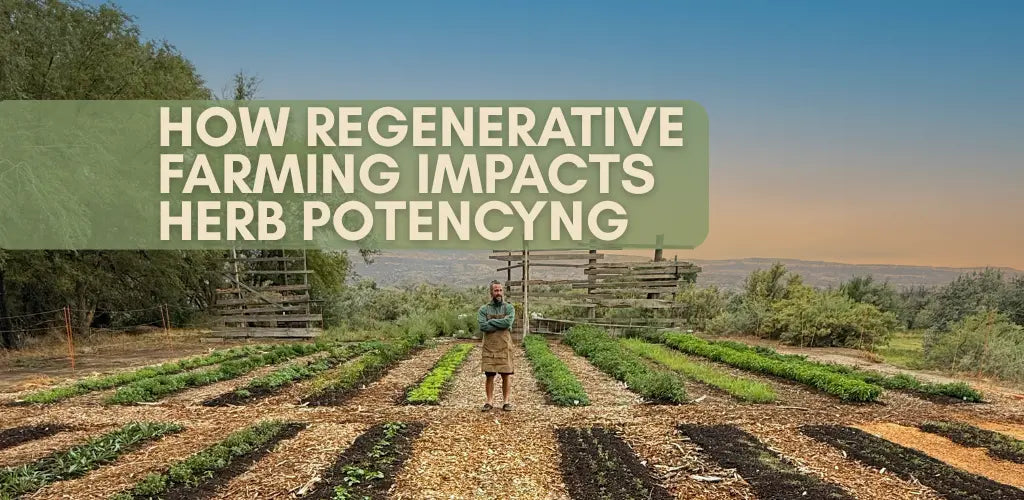草药的永恒力量
草药长期以来因其治疗功效而备受推崇,在传统医学、文化仪式和现代健康实践中发挥着重要作用。从支持身体健康到增强情绪健康,这些自然疗法提供了一种整体治疗方法——一种易于获取、可持续且根植于历史的治疗方法。
在本指南中,我们将探索草药与治疗之间的深刻联系,揭示其益处,并提供将它们融入生活的可行方法。无论您是寻求缓解压力、免疫支持还是社区福祉,Sacred Plant Co 都提供各种高品质草药来指导您走向自然健康。
草药治疗作用的历史

古老传统
- 阿育吠陀: 5000 多年来,人们一直使用南非醉茄和姜黄等草药来平衡思想、身体和精神。
- 传统中药 (TCM) : 人参和甘草根对于增强体力和长寿至关重要。
- 土著习俗:土著文化依靠鼠尾草和艾蒿进行精神净化和身体疗愈。
全球意义
精神和宗教根源
- 圣经中对治疗草药的引用:
- 圣经中提到,牛膝草和乳香等草药是净化和更新的象征。
- 古埃及人使用草药进行防腐和精神仪式以纪念生命和死亡。
草药在现代治疗中的益处

1.身体健康
2. 心理健康
- 薰衣草:镇静心灵,减轻压力,促进安稳睡眠。
- 红景天:增强注意力和抗疲劳能力。
3.情绪平衡
4.预防与长寿
最佳治疗草药及其用途

姜黄
- 好处:抗炎、促进关节健康、增强消化。
- 使用方法:冲泡金色牛奶、添加到餐食中或作为酊剂服用。
薰衣草
- 好处:缓解焦虑、改善睡眠、舒缓皮肤刺激。
- 使用方法:冲泡茶、用于芳香疗法或添加到洗澡水中。
接骨木
- 益处:增强免疫力、富含抗氧化剂、减轻感冒症状。
- 使用方法:作为糖浆服用或泡茶。
洋甘菊
- 好处:促进放松,帮助消化,镇静神经系统。
- 使用方法:泡茶或用于面部蒸汽,以放松身心。
南非醉茄
- 好处:减轻压力、平衡荷尔蒙、增强耐力。
- 使用方法:作为酊剂服用或将 Ashwagandha 粉混入冰沙中。
草药如何治愈社区和国家
草药不仅仅供个人使用——它们还有着团结人们、治愈社区的功效。
负担得起且可获得的医疗保健
促进可持续发展
培养情绪韧性
建立联系
- 举办研讨会或共同研制草药可以加强社会联系和共同目标。
自制草药食谱

1.增强免疫力的草药茶
原料:
指示:
- 将草药放入茶壶中混合。
- 加入沸水,浸泡10分钟。
- 过滤后加蜂蜜调味,味道更甜。
2. 黄金牛奶可缓解炎症

原料:
- 1 茶匙姜黄粉
- 1/4 茶匙 黑胡椒
- 1 杯杏仁奶
- 1茶匙蜂蜜
指示:
- 加热牛奶并加入姜黄和黑胡椒搅拌。
- 加蜂蜜调味,小口啜饮,即可获得舒缓的抗炎饮料。
3. 镇静草药沐浴露

原料:
指示:
- 将草药和盐混合放在细布袋中。
- 放入温水中浸泡 20 分钟。
4. 能量补充冰沙

原料:
- 1/2 茶匙南非醉茄粉
- 1 根冷冻香蕉
- 1 杯杏仁奶
- 1 汤匙 蜂蜜
指示:
- 将所有材料搅拌至顺滑。
- 尽情享受清爽、补充能量的小吃。
安全使用草药的技巧
- 咨询专业人士:在开始使用新的草药疗法之前,请先咨询医疗保健提供者的建议。
- 慢慢开始:逐渐引入草药以监测其对您身体的影响。
- 优质药草来源:选择可持续种植、不含化学物质的药草。Sacred Plant Co 确保优质。
- 正确储存:将草药存放在密封容器中,远离光线和潮湿。
关于草药的常见问题
草药和现代药物一样有效吗?
草药可以补充现代治疗方法,但不应在没有指导的情况下取代处方药。
任何人都可以使用治疗草药吗?
大多数草药是安全的,但有些情况或药物可能需要谨慎使用。
草药要多长时间才能起效?
这因人而异;有些草药能立即缓解症状,而有些则可能需要数周才能看到明显的效果。
与我们一起踏上健康之旅:共同利用草药的治愈力量

草药弥补了自然与健康之间的差距,为个人和集体健康提供了整体方法。无论您是冲泡洋甘菊茶来放松身心,还是使用姜黄来消炎,草药都会让我们想起大自然丰富的治愈礼物。





